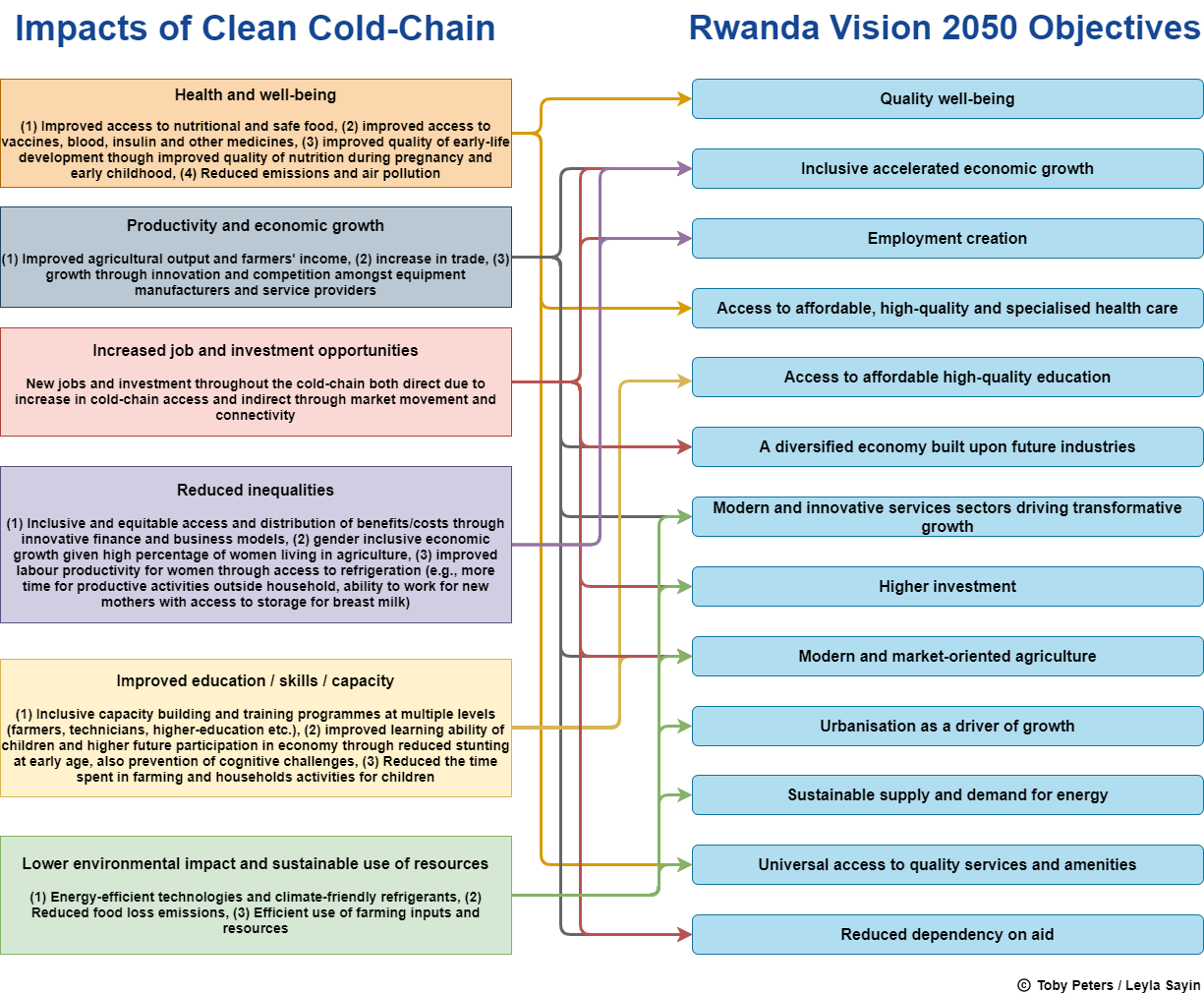How cooling and cold-chain support Vision 2050
Guided by Vision 2020 strategy launched in 2000, Rwanda has achieved an annual economic growth rate of 7.5% on average over the last two decades, which was the second fastest growth rate in Africa (WB, 2020d). Following the Vision 2020, Vision 2050 national development strategy was launched in 2016, which seeks to transform Rwanda into an upper middle-income country by 2035 and a high-income country by 2050.
Rwanda’s Vision 2050 sets ambitious goals for addressing multiple developmental challenges from food security, malnutrition, poverty reduction, and health to education and equality; all essential within a well-functioning society. Achieving these goals will however require developing an end-to-end, sustainable, resilient, inclusive, and equitable cold-chain for food and pharma.
It recognises the prominent role that the agriculture sector will play in economic growth and its links to poverty reduction, food and nutrition security (MINECOFIN, 2020). In this regard, one of the most important tasks is to establish the cold-chain that the country is currently lacking.
A technology audit for fruits and vegetables value chain conducted by the National Industrial Research and Development Agency (NIRDA) in 2019 revealed that only 5% of firms in the food and agriculture sector have a refrigerated truck for transport and only 9% of firms have a cold room to store fresh produce (NIRDA, 2019). Only 1% of the total cold storage capacity in Rwanda is used for fruit and vegetables (NAEB, 2019a). Functional cold-chains are almost completely absent or unaffordable for small and marginal farmers, where the majority of food losses occur.
Establishing a clean cold-chain in Rwanda is an essential prerequisite to the delivery of the objectives of the Vision 2050. we have identified multiple links at various degrees to almost all the indicators of the Vision 2050 strategy.
Rwanda Vision 2050 Objectives

